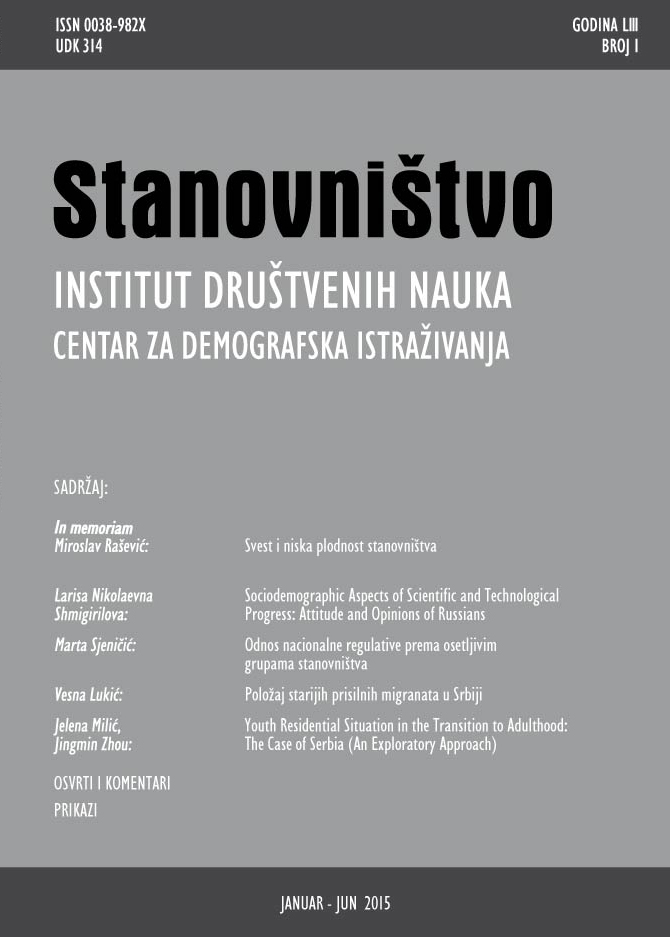Youth Residential Situation in the Transition to Adulthood: The Case of Serbia
Youth Residential Situation in the Transition to Adulthood: The Case of Serbia
(An Exploratory Approach)
Author(s): Jelena Milić, Jingmin ZhouSubject(s): Social Sciences, Psychology, Organizational Psychology, Family and social welfare, Demography and human biology, Social Norms / Social Control
Published by: Институт друштвених наука
Keywords: residential situation; housing; young people; transition to adulthood; Serbia
Summary/Abstract: Research examining the relationship between young people and housing usually tackles existential problems of those at the bottom of the social ladder (homeless, unemployed, etc.). Nevertheless, a majority of young people are facing problems that are connected to increasing prices in the housing market and lack of social policies enabling them to access adequate housing. Young adults are widely excluded from the housing market, and one of the main markers of the transition to adulthood, residential autonomy, is often perceived as an elusive goal. This paper attempts to illustrate the possibilities and obstacles that prevent youth from achieving residential independence in Serbia.The data collected in this exploratory study done in 2014, on a sample of 312 respondents, is used to analyze some of the most important structural factors (job market, education, financial situation and access to the housing market). Hence, the following subjective indicators, and their relation to respondents' residential circumstances, were of the particular interest: reasons for choosing current living arrangement; living arrangement and the satisfaction with material situation; living arrangement and the estimation of financial situation; and degree of financial independence and estimation of financial situation. It appears that the residential situation of young people represented by the sample is greatly influenced by their age, financial circumstances and educational status. It has been observed by respondents to this study that the most represented living arrangement was living with parents and that even older cohorts (30 to 35 years old) in most cases continued living with their family of origin to date. As our findings indicate, youth from the sample perceived this residential arrangement more as a consequence of poor financial situation and lack of cheap housing, rather than a desirable choice. It was confirmed that residential autonomy from the family of origin is perceived as the most appealing living arrangement, but is largely restricted by one’s own material situation. The findings from this exploratory study suggest that a vast majority of respondents cannot afford apartment purchase without additional financial resources. One of the main adopted strategies that respondents implemented in resolving their housing situation were living with the family of origin. According to recent research done in Serbia, achieving residential autonomy is deferred or, in some cases, it never occurs. The authors of this study concluded that almost half of the young people rely on family support to solve their housing situation, and one third does not foresee a positive outcome regarding their own residential independence. These results highlight the fact that more than half of newly established families begin life in common housing with their parents, while unmarried youth usually live with their parents as well. It is difficult to predict if there will be significant improvements in the housing affordability or job market situation for youth, therefore the prospect of achieving residential independency for generations to come, will remain tremendously challenging. Investigating existing and defining new strategies, in both the family and broader society contexts, is an important task for future research on accessibility of housing and youth residential situation advancement given the importance of this factor in the transition to adulthood.
Journal: Stanovništvo
- Issue Year: 53/2015
- Issue No: 1
- Page Range: 61-87
- Page Count: 27
- Language: English

